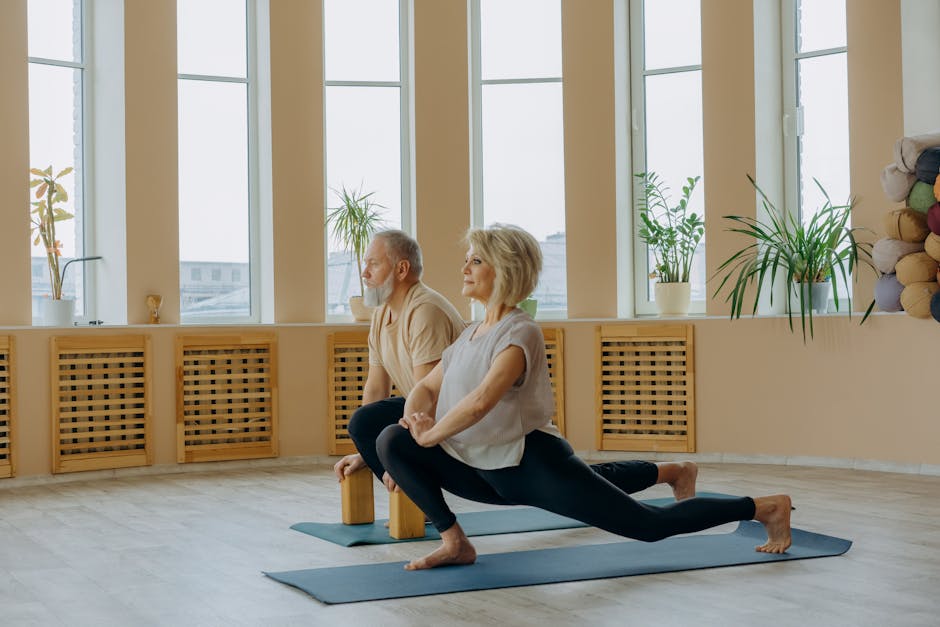Exercise Daily _ How To Improve Balance For Seniors
As we age, maintaining balance becomes increasingly crucial. Falls are one of the leading causes of injury among seniors, often resulting in serious health complications. However, many people underestimate the importance of balance training and its impact on overall health. This article aims to provide evidence-informed strategies to improve balance for seniors, while also addressing common misconceptions and counterarguments.
The Importance of Balance for Seniors
Balance is not just about standing on one leg; it encompasses a wide range of physical skills that are vital for daily activities. The Centers for Disease Control and Prevention (CDC) report that one in four older adults falls each year, leading to significant injuries and even fatalities. Furthermore, the World Health Organization (WHO) emphasizes that preventing falls is essential to maintaining independence and quality of life for older adults.
Many seniors believe that balance training is only for athletes or younger individuals. This misconception can lead to a lack of engagement in activities that could significantly enhance their stability and overall well-being. In reality, balance exercises are accessible to everyone, regardless of fitness level.
Common Misconceptions About Balance Training
Before diving into effective strategies for improving balance, it’s important to address some common misconceptions:
- Misconception 1: Balance training is only necessary for those with existing balance issues.
- Misconception 2: Balance exercises are too risky for seniors.
- Misconception 3: All balance exercises are the same.
These misconceptions can deter seniors from engaging in exercises that could enhance their stability. In truth, balance training is beneficial for everyone, and there are safe ways to incorporate it into daily routines.
Evidence-Based Strategies for Improving Balance
To improve balance, seniors can engage in a variety of exercises. The following strategies are supported by scientific evidence and can be tailored to individual needs and abilities:
1. Strength Training
Strength training is crucial for improving balance. Research indicates that increased muscle strength enhances stability and reduces the risk of falls (Buchner et al., 1997). Exercises targeting the legs, core, and upper body help build the necessary strength for maintaining balance.
“Strength training not only improves muscle mass but also positively affects balance and stability in older adults.” – National Institutes of Health (NIH)
2. Flexibility and Stretching
Incorporating flexibility and stretching exercises can improve the range of motion and reduce stiffness, which can contribute to better balance. A study published in the Journal of Aging and Physical Activity found that flexibility training significantly improved balance among older adults (Maki et al., 2008).
3. Balance-Specific Exercises
Exercises specifically designed to improve balance should be a fundamental component of any senior fitness regimen. These may include:
- Single-leg stands
- Tai Chi
- Heel-to-toe walking
- Balance boards or stability balls
Tai Chi, in particular, has garnered attention for its effectiveness in enhancing balance, coordination, and overall health (Li et al., 2005). It combines slow, deliberate movements with mindfulness, making it suitable for seniors.
4. Incorporating Technology
With the rise of fitness technology, seniors can now utilize wearable devices and apps to track their progress and stay motivated. Some devices come equipped with balance training programs specifically designed for older adults, providing guided exercises that can be done at home.
Creating a Balanced Routine
To achieve the best results, seniors should aim to create a balanced routine that includes strength training, flexibility exercises, and specific balance activities. According to the WHO, older adults should engage in physical activity for at least 150 minutes per week, incorporating activities that enhance balance on at least three days a week.
Sample Weekly Routine
Here’s a sample weekly balance improvement routine for seniors:
- Monday: 30 minutes of strength training (focus on legs and core)
- Tuesday: 30 minutes of Tai Chi
- Wednesday: 30 minutes of flexibility exercises
- Thursday: 30 minutes of balance-specific exercises
- Friday: 30 minutes of strength training (focus on upper body)
- Saturday: 30 minutes of walking or another aerobic activity
- Sunday: Rest or light stretching
By following a structured routine, seniors can progressively improve their balance and overall physical fitness.
Nutrition and Balance
Nutrition plays a crucial role in supporting physical fitness and balance. A well-balanced diet can enhance muscle strength and overall health, reducing the risk of falls. Key nutrients to focus on include:
- Protein: Essential for muscle repair and growth.
- Calcium and Vitamin D: Important for bone health.
- Omega-3 Fatty Acids: May reduce inflammation and support joint health.
For a healthy snack that supports muscle health and provides energy for exercise, consider the following recipe:

Protein Smoothie Recipe
Ingredients:
- 1 cup of spinach
- 1 banana
- 1 scoop of protein powder
- 1 cup of almond milk
- 1 tablespoon of chia seeds
Instructions:
- Blend all ingredients until smooth.
- Pour into a glass and enjoy!
Counterarguments: Why Some Seniors Avoid Balance Training
Despite the clear benefits, many seniors may hesitate to engage in balance training. Some common reasons include:
- Fear of Injury: Concerns about falling during balance exercises can deter participation.
- Lack of Knowledge: Not knowing which exercises to perform can lead to inaction.
- Perceived Lack of Time: Many seniors believe they do not have enough time to commit to a balance training routine.
Addressing these concerns through education and community support can encourage more seniors to prioritize balance training. Group classes or sessions with a certified trainer can provide a safe and supportive environment for seniors to improve their balance.
Conclusion
Improving balance is essential for seniors to maintain independence and quality of life. By incorporating strength training, flexibility exercises, and balance-specific activities into their routines, seniors can significantly reduce their risk of falls. Additionally, proper nutrition plays a vital role in supporting physical health.
It’s crucial to dispel misconceptions surrounding balance training and promote its importance among older adults. With the right approach and resources, seniors can take proactive steps to enhance their balance and overall well-being.
For more information on exercise and fitness for seniors, visit our exercise section or explore our fitness resources.
These are for informational purposes only. Consult your doctor and do your own research before use.
- Buchner, D. M., et al. (1997). “Evidence-based approaches to reducing injuries in older adults.” National Institutes of Health.
- Maki, B. E., et al. (2008). “The impact of flexibility training on balance in older adults.” Journal of Aging and Physical Activity.
- Li, F., et al. (2005). “Tai Chi and fall reductions in older adults.” Journal of the American Geriatrics Society.
- Centers for Disease Control and Prevention (CDC). “Falls Among Older Adults.”
- World Health Organization (WHO). “Ageing and Health.”
Eat daily, sleep daily, exercise daily.
These are for informational purposes only. Consult your doctor and do your own research before use.











